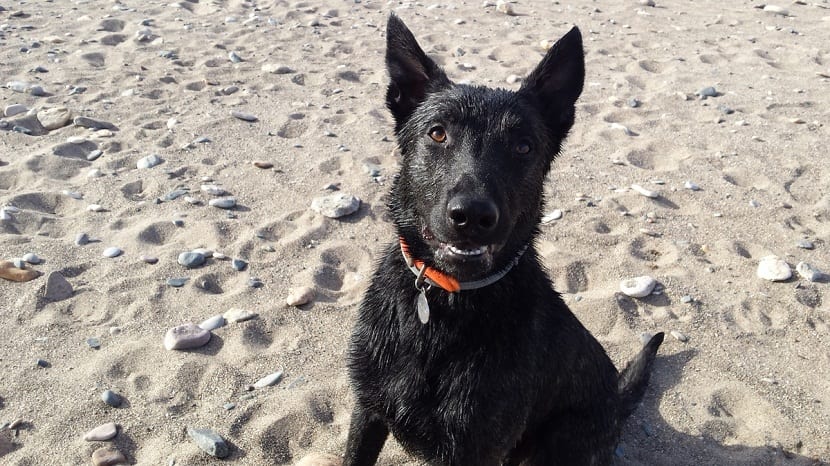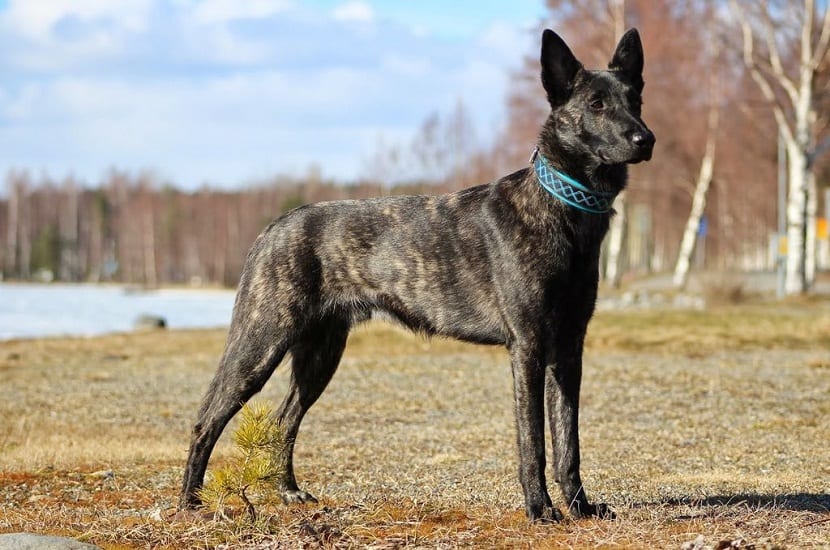
The Dutch shepherd is part of a select canine elite as are the breeds of shepherds. These dogs that were or are dedicated to this trade have developed a set of qualities highly appreciated in today's world. Loyalty, courage, guardians, independent, proactive and obedient are some of the behaviors that characterize him.
Each area that has been dedicated to livestock has a breed of sheepdog and Holland is no exception, that is why the Dutch Shepherd has earned a position of honor among the most intelligent and functional dog breeds that exist.
Origin of the Dutch Shepherd breed
El Dutch Shepherd or Dutch Shepherd It is obviously originally from the Netherlands or Holland. The community of shepherds gave these pets multiple functions, including that of guardian. They moved and delimited the spaces where the sheep and cows moved and even maintained order in the farms, preventing the animals from invading the spaces of the house or crops.
The versatility of functions and adaptability of the shepherd breed it did not diminish its popularity with the decrease of the cattle work. For its incredible versatility and adaptability It was very easy for him to go from being a working pet to a company mascot, being so that by 1898 he already had established standards and acceptance in the main dog clubs.
Features
The physical characteristics of the Dutch Shepherd differ slightly between the female and male gender. This breed of dog falls within the standards of medium sizeTherefore, they do not usually weigh more than 30 kg. The height at the withers of the females is an average of 57 centimeters and the males 60 centimeters.
When it comes to physical appearance, the Dutch Shepherd has an athletic body with good muscle tone and noticeable strength. Its physical structure is long in the shape of a rectangle and its measurements keep harmony and balance between all parts of the anatomy. The head has a flat skull with a long and less prominent muzzle.
The eyes are large dark and oval in shape. The nose must be black. The ears are not very large, but they are straight and up. The erect form is most noticeable when the dog becomes alert and the hind and front limbs are strong and show well-formed muscles. The body ends in a tail with a slight upward curve and always straight.
PREMIUM QUALITY
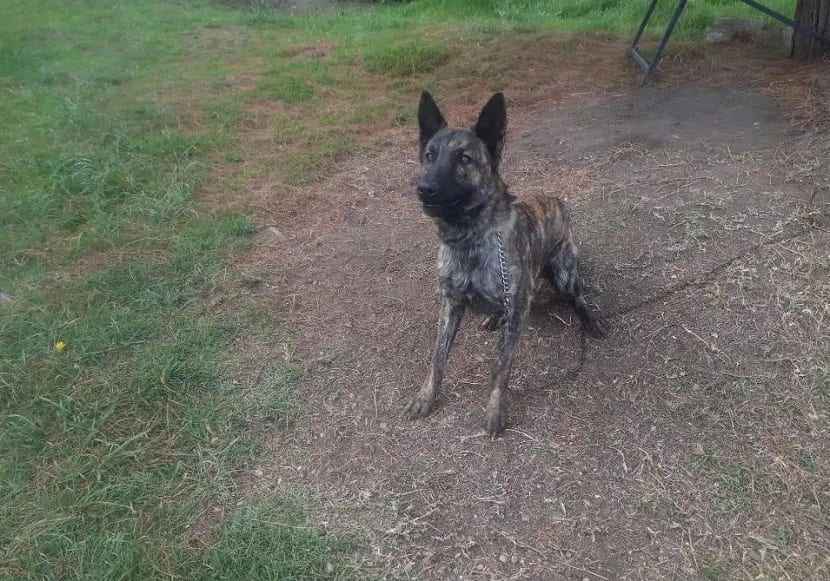
Within the breed of the Dutch shepherd the following varieties can be distinguished, which would be those of wire hair, long hair and short hair. The first, with wire hair, is characterized by having a dense and rough coat that is quite close to the body with a softer and thicker undercoat, somewhat woolly.
Short-haired Dutch Shepherds have rough, close-to-the-body fur. Finally, the long-haired shepherd has a noticeably smoother and longer coat, especially on the hind and forelimbs.
The variation of colors accepted for this breed of shepherd is brindle, with combinations of gold and silver at the base. The absolute black color is not allowed by the breed standard, unless it is brindle. Within the standards, varieties that have a face with black fur like a mask are allowed.
Care, health and diseases
The life expectancy of the Dutch Shepherd is between approximately 12 and 15 years. Unlike other breeds, the breeders of this shepherd focused their efforts on strengthening the health of such precious pets. Prioritizing physical condition over aesthetic value has given the breed strong health.
Because it is a medium-sized dog, the most common condition is hip dysplasia and in the adult stage some affections in the circulation. In order to prevent it visits to the vet are necessary to quickly diagnose and take care of the diet to avoid the counterproductive overweight.
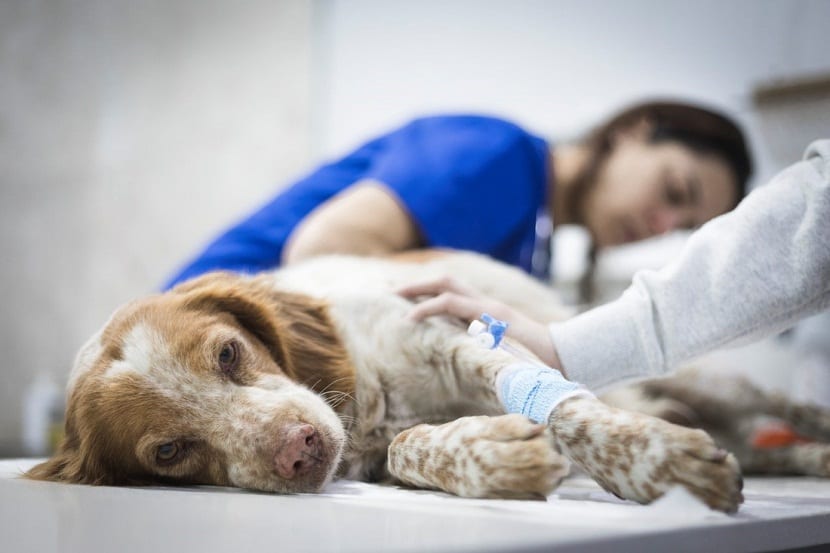
There is a series of basic care that every owner must provide for their pet. In the case of the Dutch Shepherd, everything begins with the acquisition of the baby. They must ensure that the puppy has been properly weaned and have a well-established track record.
Visits to the vet are imperative, in addition, special attention must be paid to feeding and understanding that it is different depending on the stages of development of the pet. Once it reaches adulthood The vaccination schedule and the hygiene and care of ears, eyes and dentures should not be neglected.
The Dutch Shepherd's coat requires regular brushing. The right time to do them is when you have returned from walks or physical activities to discard dirt or parasites and they will be given a bath every four to six weeks with specific products for dogs. Besides, this will strengthen the bond between the pet and its owner.
Education
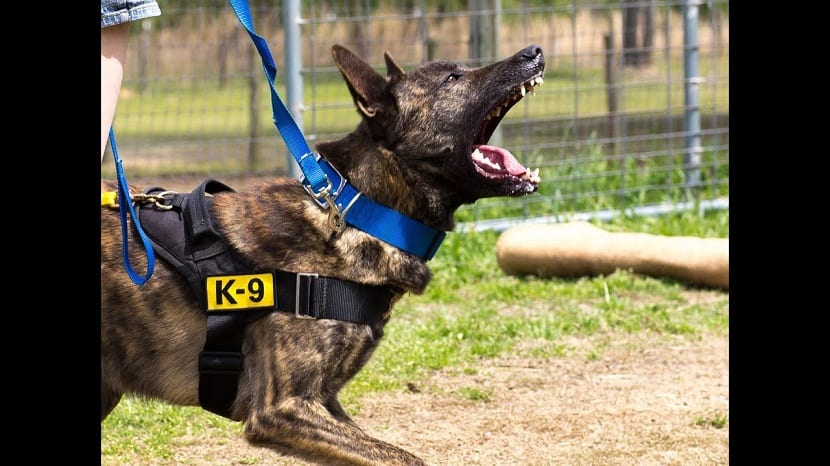
The character of the Dutch Shepherd is perfectly balanced. The work that he has developed for centuries has given him the genetic predisposition of a very acceptable social behavior. The adaptability of the pet has a wide family scope and its relationship with children is very protective and full of patience.
It has visible characteristics of loyalty, empathy and desire to please its owner. The only thing that the pastor requires to show all his temperamental gifts is to have a daily exercise that allows him to channel the incredible amount of energy he has.
It is very important to highlight the importance for this breed to be able to do a considerable amount of daily physical activity, since his historical genetics has conditioned him to have and expend a considerable amount of energy. It is essential for your personal balance to exercise frequently.
The Dutch Shepherd has the intelligence and temperament necessary to be considered an easily trained pet and this breed is docile and attentive, apart from being full of energy and motivation. Has the ability to learn commands and tricks with little dedication. If they are trained with perseverance and discipline, they stand out in agility and intelligence competitions, for this reason they are used for security jobs, police officers, guides, etc.
The aspect that must be trained the most in the breed of the shepherd is to socialize with human beings. With other pets everything will be fine as long as the Dutch is the leader. Its alpha character requires safe and reliable owners who reinforce their training always with positive reinforcement.
These overly protective pets must be taught to interact positively with humans to avoid accidents, as their instincts lead them to be territorial. For this reason, negative stimuli should never be used with these dogs.
